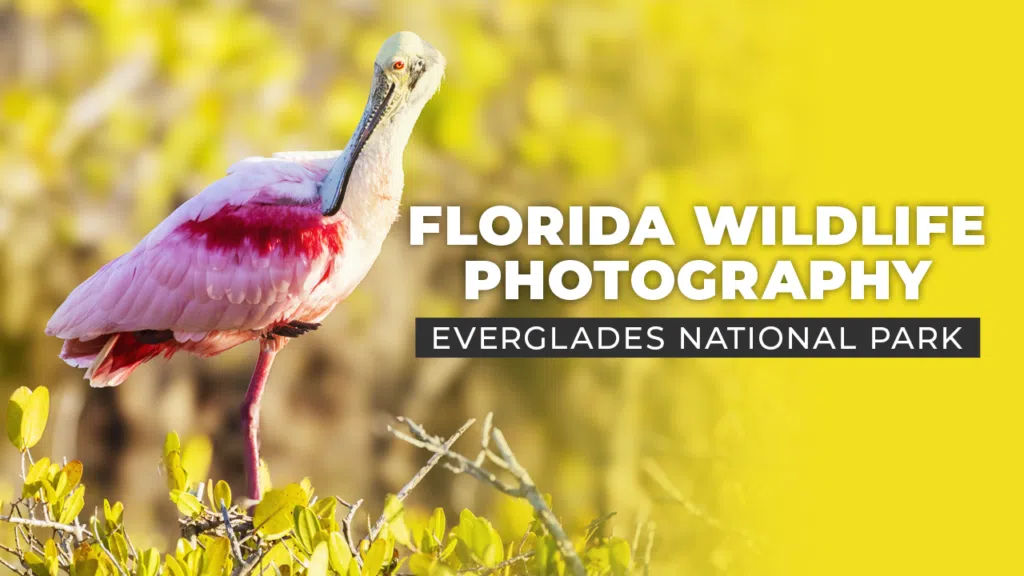South Florida is home to an abundance of bird species consisting of wading birds, songbirds, shorebirds, birds of prey, and so many more. It’s no wonder why wildlife photographers from around the world “flock” here every year to capture some amazing photos of them! In this article, I’ll share a few prime locations for Florida wildlife photography, as well as the best times of year to photograph these avian beauties. You’ll also have the opportunity to photograph other native wildlife that reside here such as the American alligator and crocodile. If you’re really lucky, you may even see a Florida black bear and the endangered Florida panther!
Everglades National Park
The first location is the southern portion of Everglades National Park, which is home to over 300 bird species! I’ll start at the beginning of the park and make my way south to the very end while making some stops along the way. It’s important to know that the Everglades has two seasons; the wet season and the dry season. Typically, the wet season runs from June to November, while the dry season runs from December to May. The dry season is the best time for photographing wildlife, especially birds since they will gather in large flocks in certain areas where there is still water present. These bodies of water are plentiful with fish, insects, and other food sources the wildlife need to survive. At the start of spring, you’ll see lots of activity from these birds as they start collecting materials like sticks and Spanish moss to build their nests. You may also notice some of the males transform into their stunning breeding plumage!
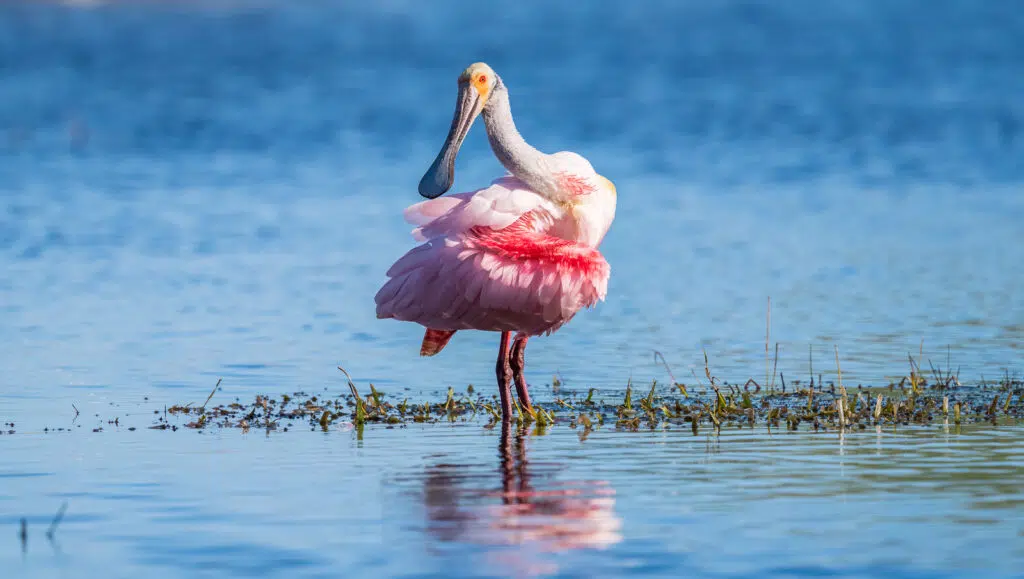
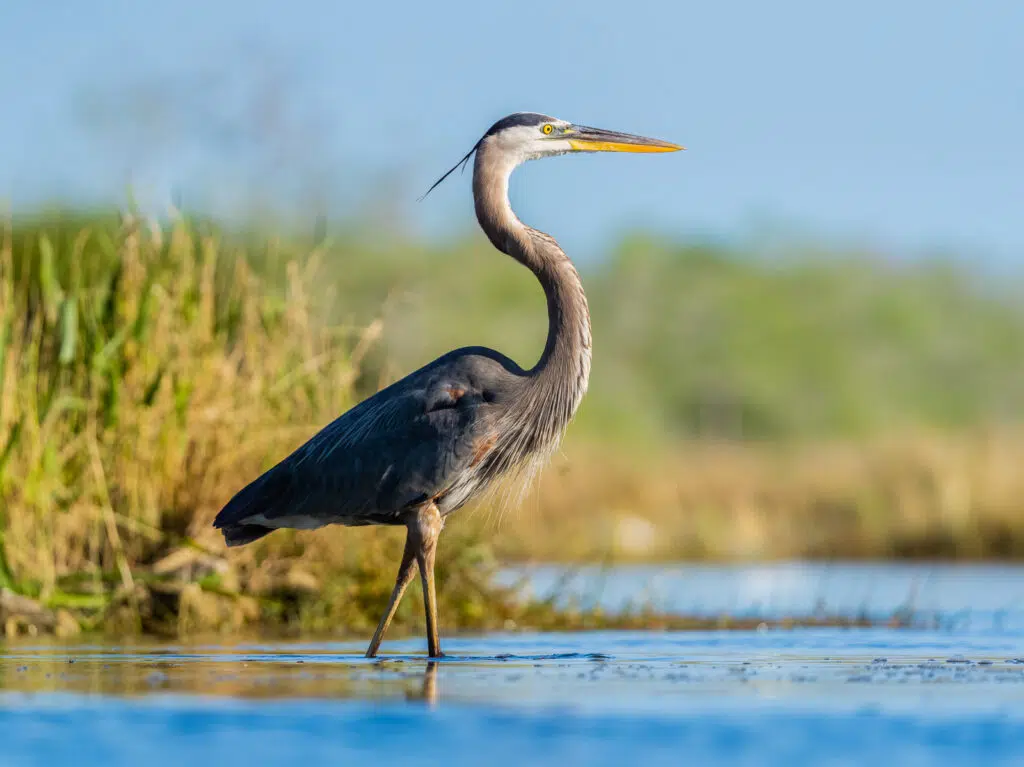
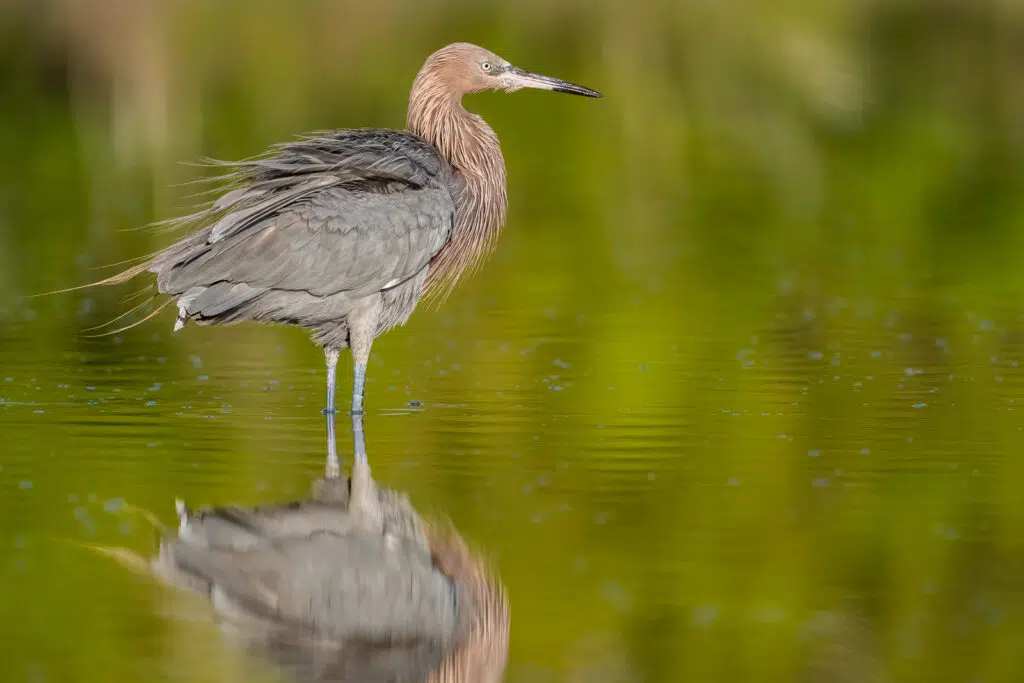
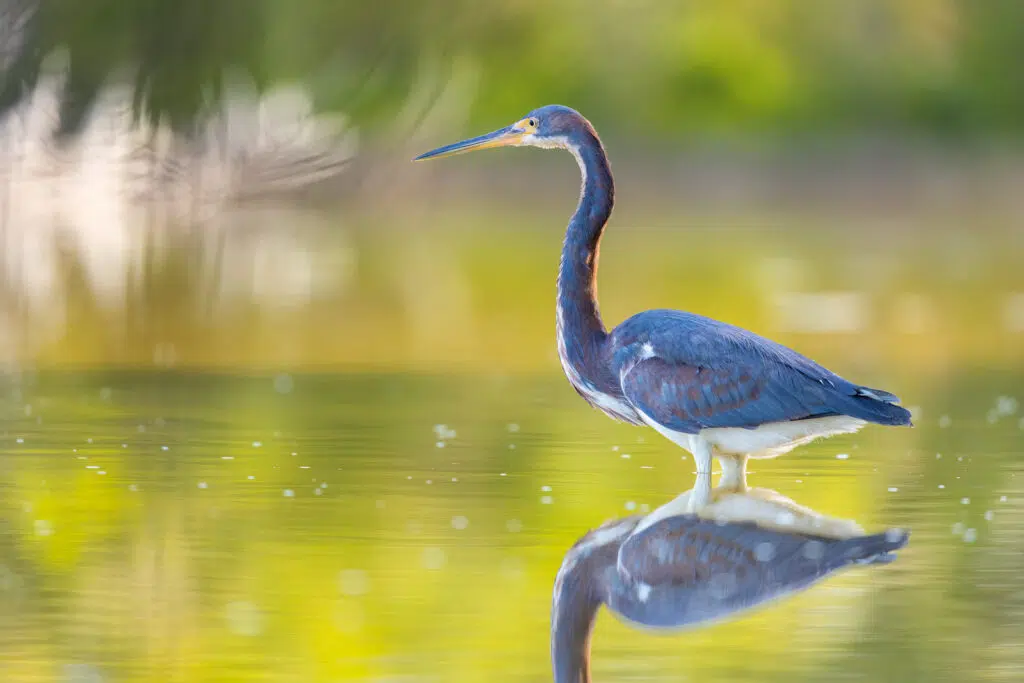
Anhinga Trail
Just a couple of miles from the main park entrance is the Anhinga trail. This is a very popular stop for visitors to immerse themselves in the Everglades’ habitat and view its wild residents safely from a boardwalk. It’s appropriately named because you will see lots of anhingas! Most of the birds along the boardwalk have become accustomed to humans so they are not skittish, therefore it is very easy to photograph them. Other wildlife you can expect to see are double-crested cormorants, great white egrets, great blue herons, purple gallinules, and the American alligator. For this location, I would recommend a 100-400mm lens but even a 70-200mm would work after a bit of cropping in your image editor. As a side note, the parking lot has signs warning visitors that their cars may become damaged due to the black vultures that love to pluck and peck at the rubber portions of vehicles like windshield wipers, window seals, and even tires! The park rangers always suggest to visitors with rental cars to get the added insurance coverage.
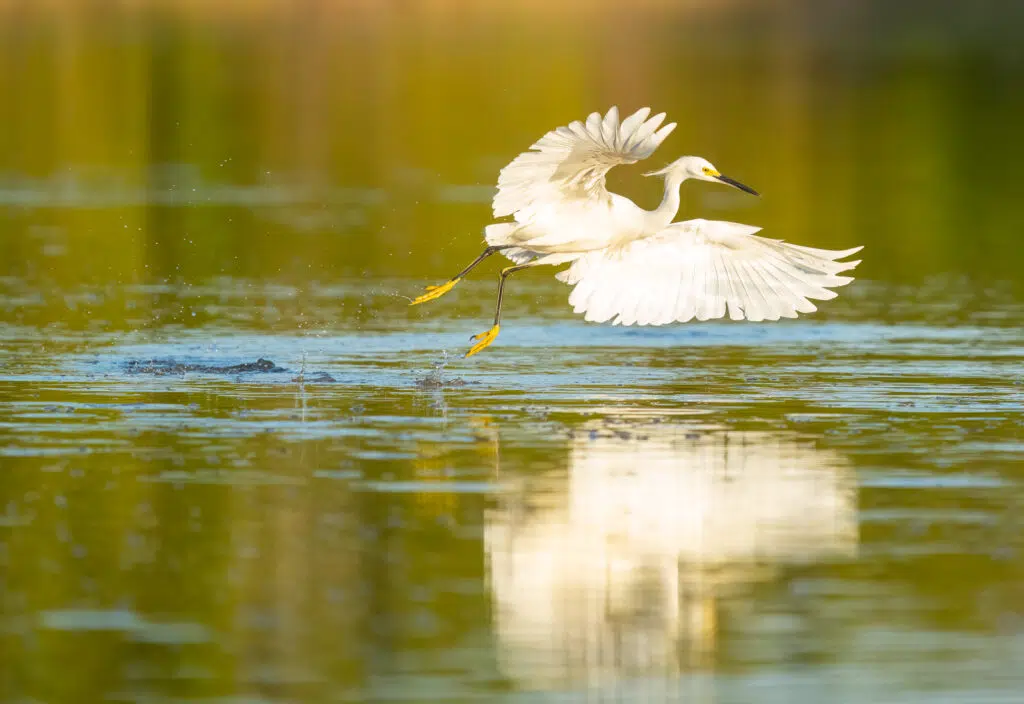
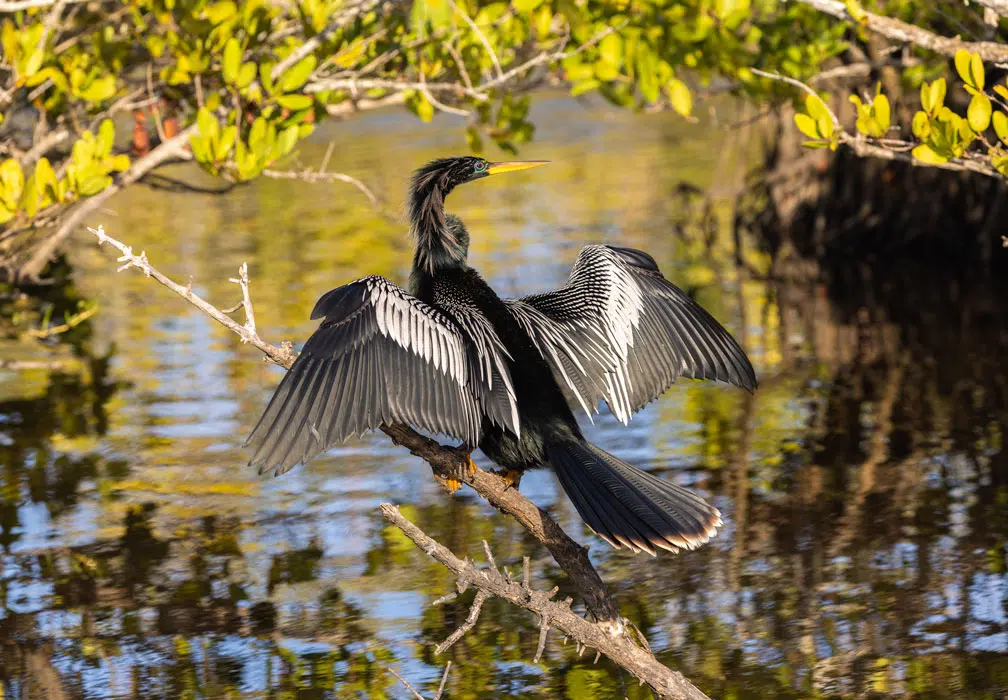
Pa-hay-okee
The next stop is one of my favorites as I could spend hours here photographing birds and landscapes. In my opinion, Pa-hay-okee contains the most diverse number of bird species you’ll see in the park. You can expect to see tons of white egrets, anhingas, great blue herons, red cardinals, loggerhead shrikes, palm warblers, barred owls, mockingbirds, crows and so much more. Let’s just say this location is a paradise for birders and ornithologists. During late winter and early spring you will also be able to see baby alligators resting in the grass near the water’s edge, but be cautious not to get too close to them because their mom might be nearby and are very protective. Although this is another popular spot for visitors, the wildlife here are very skittish and often fly away when they see humans. You’ll have to practice stealth and be very quiet when exiting your car so as not to alert them. The upside is that you can photograph most of the birds from the comfort of your vehicle. Just park along the roadside, roll your windows down and click away. I recommend using a beanbag or even a window mount to help stabilize your camera and lens, especially if you’re using a bulky prime telephoto in the 600-800mm range. A quick tip: turn off your car to minimize vibrations when resting your lens on the window mount. I mentioned barred owls earlier, but it is rare to see them from the roadside. If you are keen on photographing them, you’ll have to wander out into the cypress domes for better odds. I do not recommend doing this on your own, especially if it’s your first time! There are a minimal amount of reports of people getting injured by alligators defending themselves because they were either stepped on or protecting their nest. If you stop by the Ernest Coe visitors center, located before the main entrance, you can sign up with local guides and rangers who lead group tours safely out into the cypress domes. These tours are very informative and educate you about the habitat and how you can safely navigate through it.
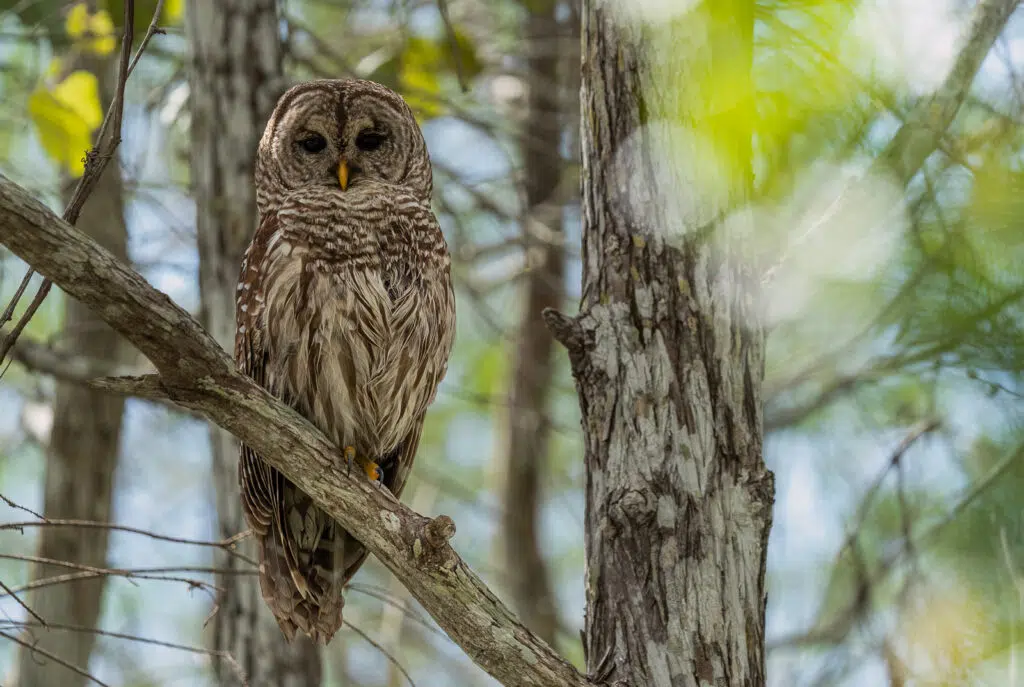
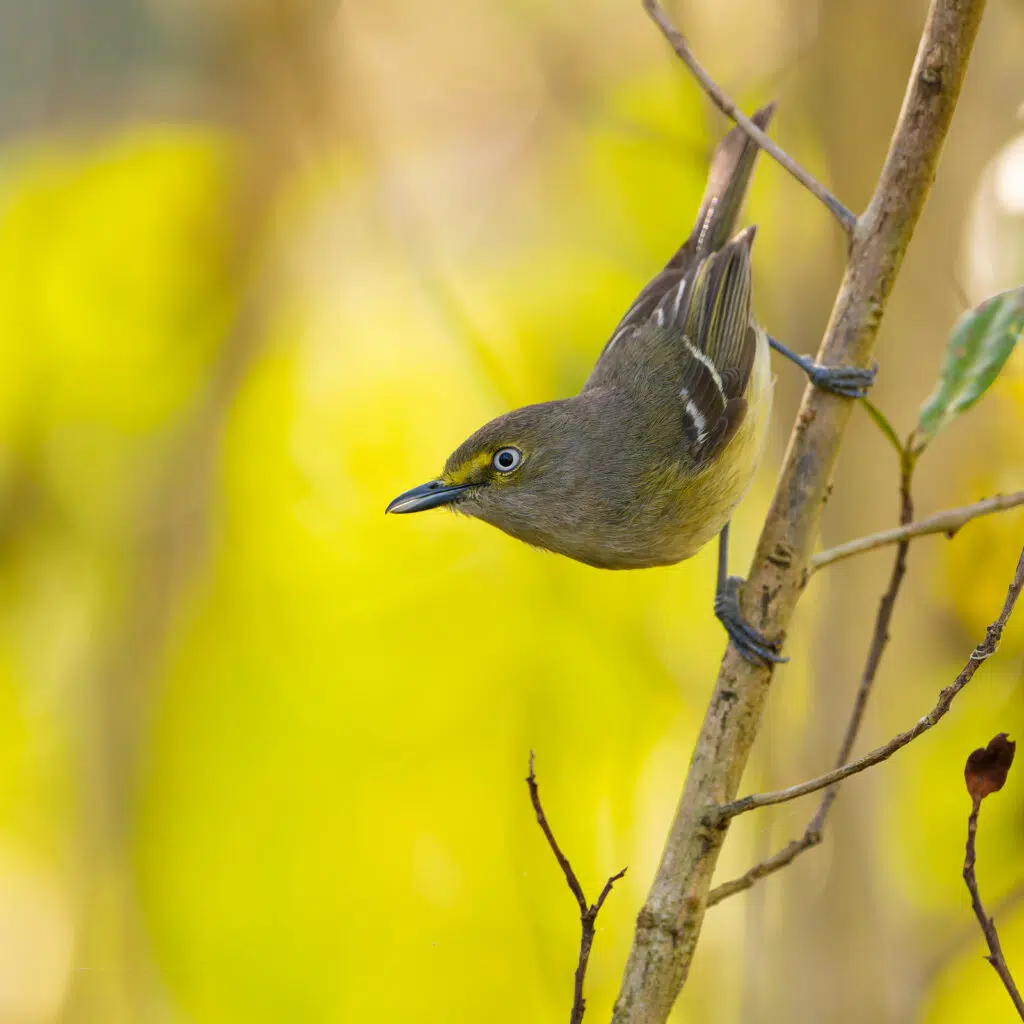
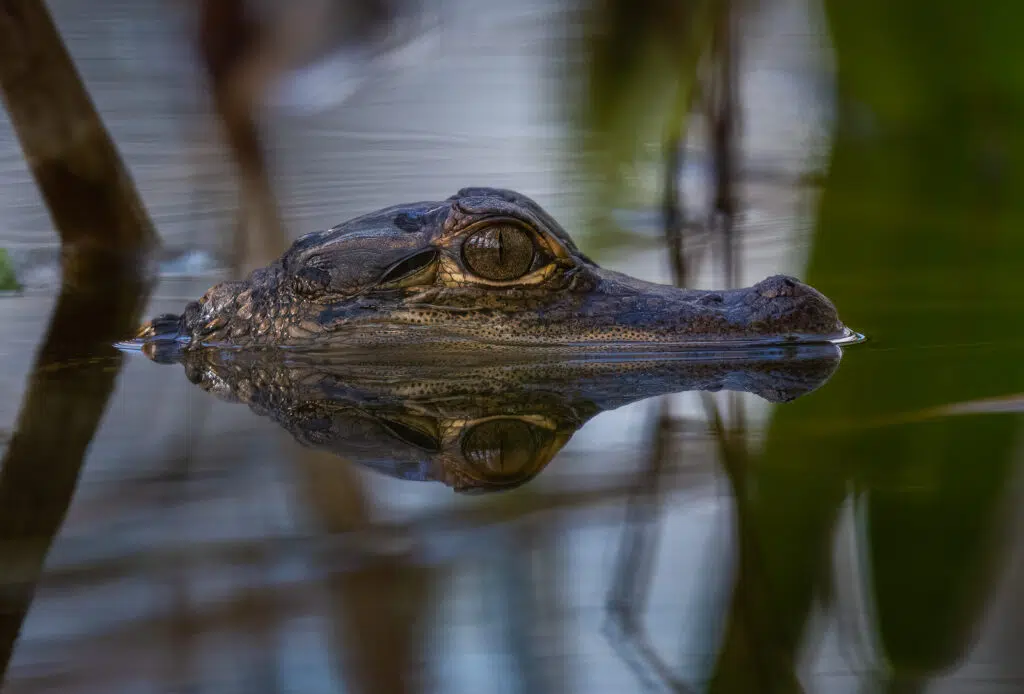
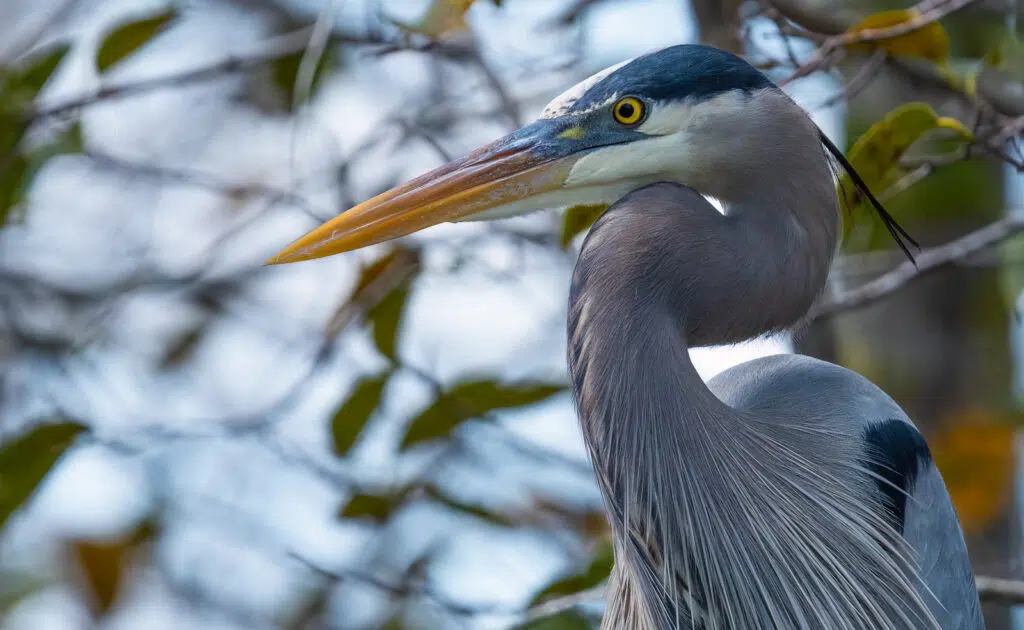
Nine Mile Pond
The next stop is a bit farther south and is not particularly a great spot for photographing birds, but I find it worth including because this is where you can see the legendary croczilla! Croczilla is a 40-year-old American crocodile that is 14-15 feet long and is a spectacle. During cold winter days, he loves to lay out in the grass and warm up in the midday sun. Most people think he’s either a statue or dead because he barely moves! Sometimes he’ll lay there with his jaws wide open as he tries to regulate his body temperature. Brumation is common for alligators as well during really cold winter days. You’ll need a lens in the medium focal length range to capture his entire body, so something like a 24-70mm or even a nifty fifty. If you want to capture some close-up details like his eyes and teeth then use a 100-400mm lens. Remember to always practice safety and don’t try to touch or get too close to them as they are known to be unpredictable. Two quick notes; Nine Mile Pond is one of the few locations where you can see alligators and crocodiles coexist. Also, red-shouldered hawks are commonly seen in the areas surrounding the pond. They usually perch way up on dead tree branches.
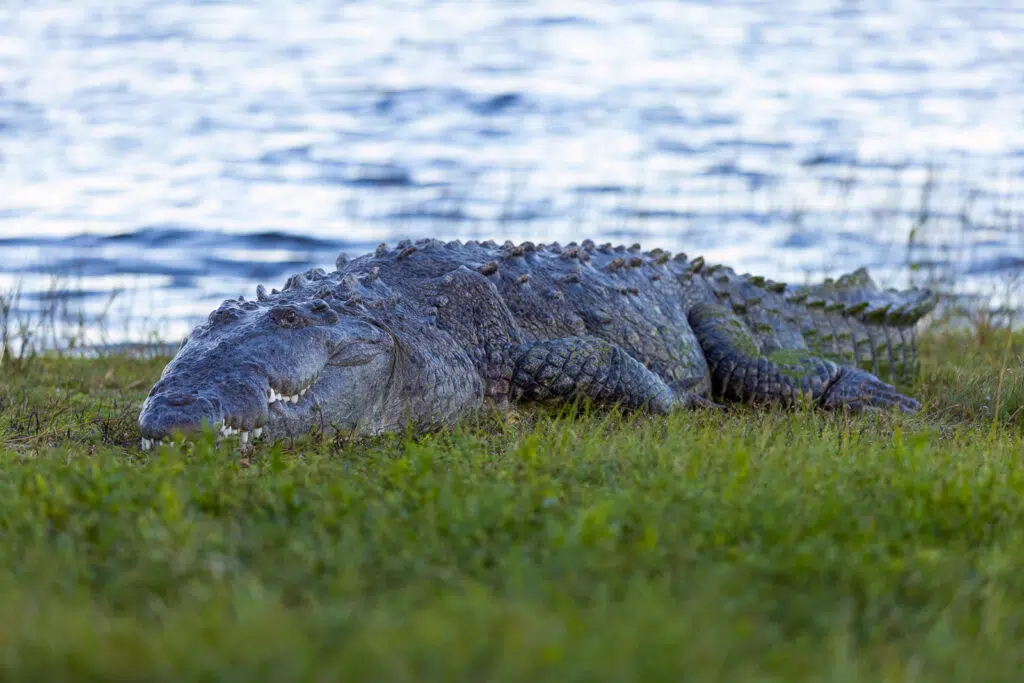
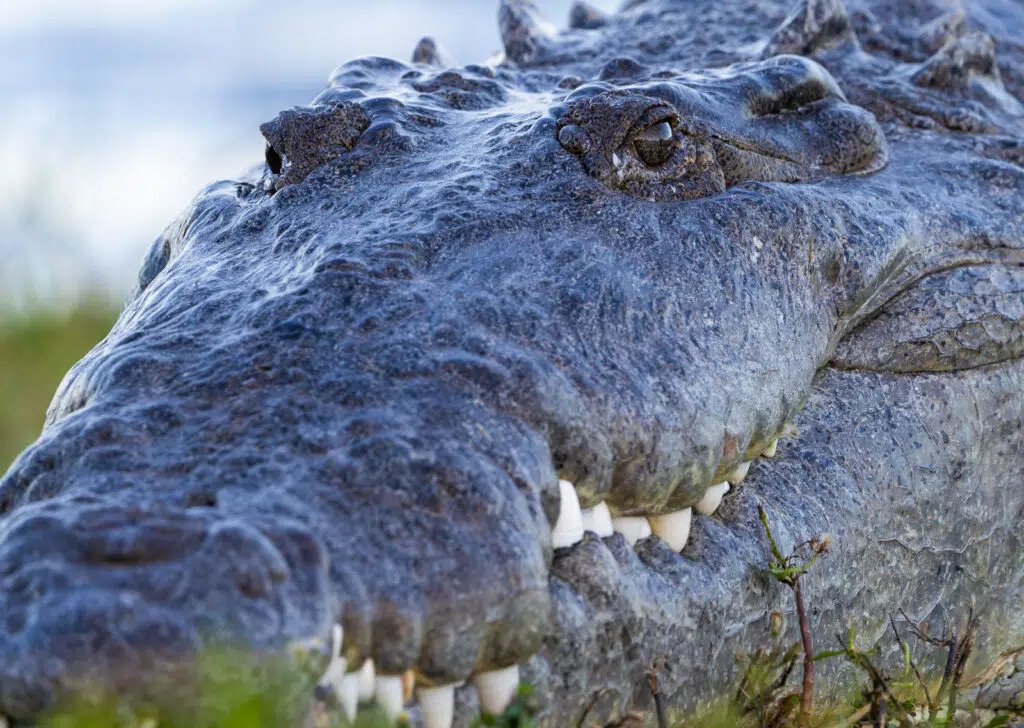
Mrazek Pond
Just a few miles south of Nine Mile Pond is one of the best locations to photograph wading birds during the dry season! From late February and into mid-March when the water is low, you’ll see so many waders feasting at Mrazek Pond. Some days there’s such a staggering amount that it’s near impossible to get just one bird in the frame! The water is a cappuccino brown and is a stark contrast when it’s filled with dozens of American white pelicans and snowy egrets. You’ll also see pied-billed grebes, green herons, brown pelicans, and the coveted roseate spoonbills that offer the only vibrant color amongst the sea of white. Wood storks are also very common as well as tricolored herons that feed around the surrounding mangroves. For this location, I will again recommend a 70-200mm lens for birds closer to the shoreline and up to a 600mm lens for birds farther away. A quick pro tip for this location is to stay low and try to photograph the birds at their eye level. Not only will this make you seem less threatening to the wildlife, but you’ll get beautifully blurred foregrounds that will make your subjects stand out while offering a unique perspective. This means lying on your belly or maybe using a ground pod or something similar. Having a tilting screen is a huge help and will reduce neck strain. One more tip is to try and include a bit of the environment the bird is in, such as perches, trees, or grass reeds. They add to the story and this makes the photo more engaging. I like to get my close-up portrait shots first and then zoom out a bit to include more of the scene.
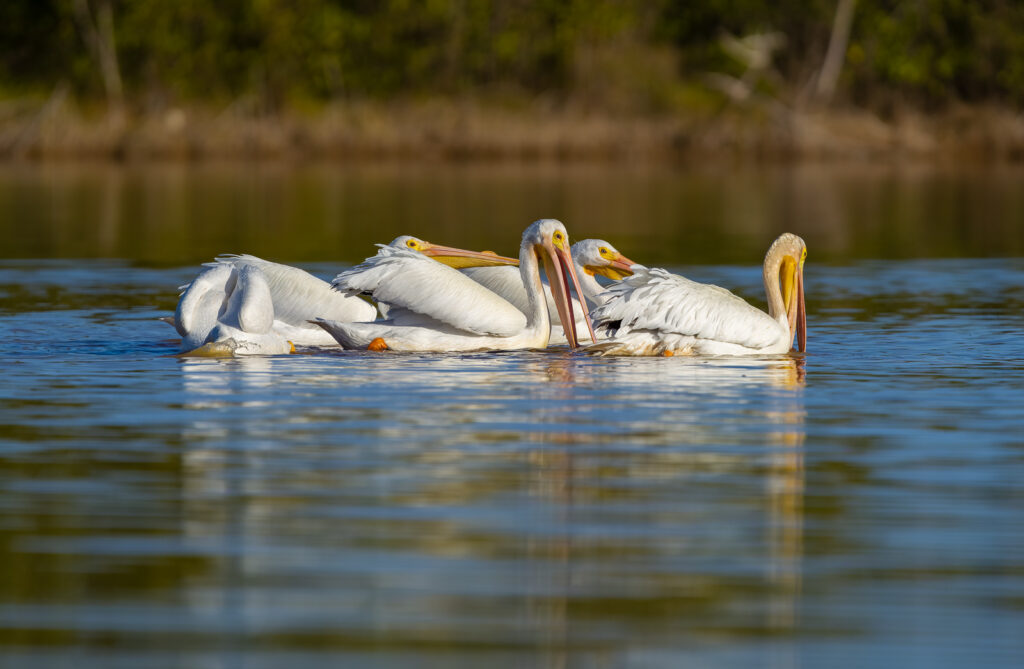
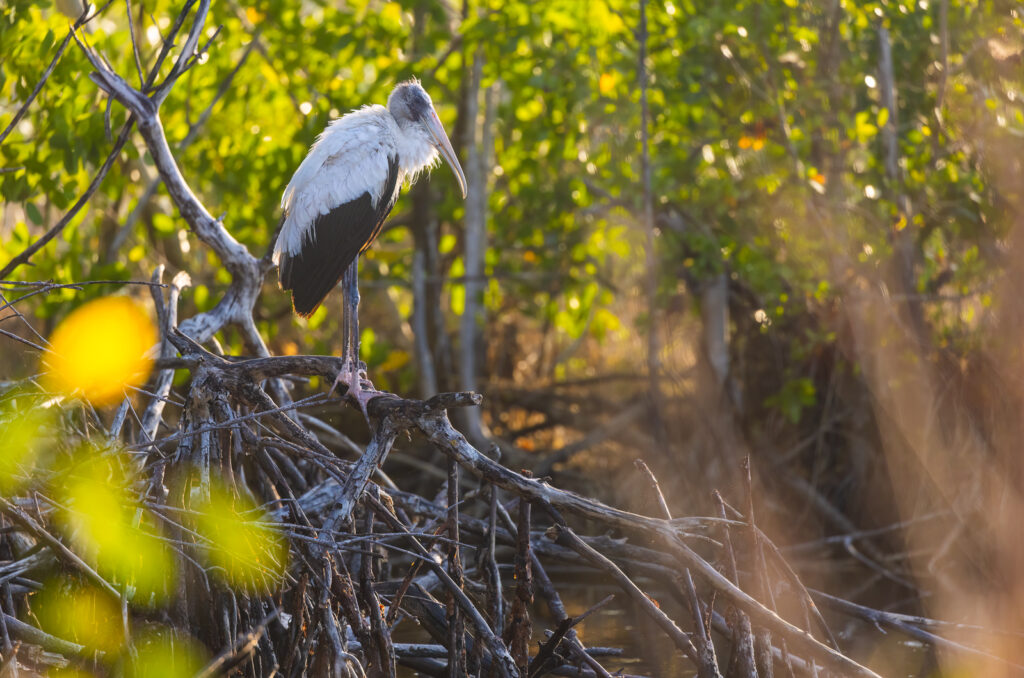
Eco Pond
IMHO, the best location for Florida wildlife photography is Eco Pond. It is located near the Flamingo campgrounds and was once a birders’ paradise and was even more diverse than Pa-hay-okee. Sadly, after Hurricane Irma struck, the pond was inundated by a saltwater surge from Florida Bay. This changed the chemistry of the freshwater pond and there was no longer any nourishment for the birds. The good news is nature is resilient and after a few years of heavy rainfall the pond has become desalinated and life is returning! As of March 2023, you can see an abundant amount of wading birds hunting in the yellow-green water again, though it seems not all the species got the memo and have not yet returned. From March to April, you’ll see American white pelicans, roseate spoonbills, reddish egrets, belted kingfishers, black-necked stilts, white ibis, swallow-tailed kites, and wood storks to name a few. At the center of Eco Pond is a small island with dead buttonwoods surrounding it, which make great perches for the waders and you’ll often see red-shouldered hawks preening on them as well. As mentioned earlier, this location is very diverse so you’ll also see red cardinals, white-eyed vireos, gray catbirds, painted buntings, and a variety of warblers in the trees and bushes surrounding the pond exterior. There are also a few pairs of ospreys nearby that will fly over as they search for nesting materials. My lens recommendations are the same as Mrazek Pond, but I also suggest bringing a small step stool or some kind of water-resistant pad to sit on, or else your bottom will be covered in mud. Once you’ve had your fill of Eco Pond, make sure to stop by the Flamingo Marina on your way out. Over by the canoe and kayak rentals area is a huge osprey nest where you can easily capture some photos of the pair and their chicks. You’ll also have the opportunity to see more crocodiles and Florida manatees!
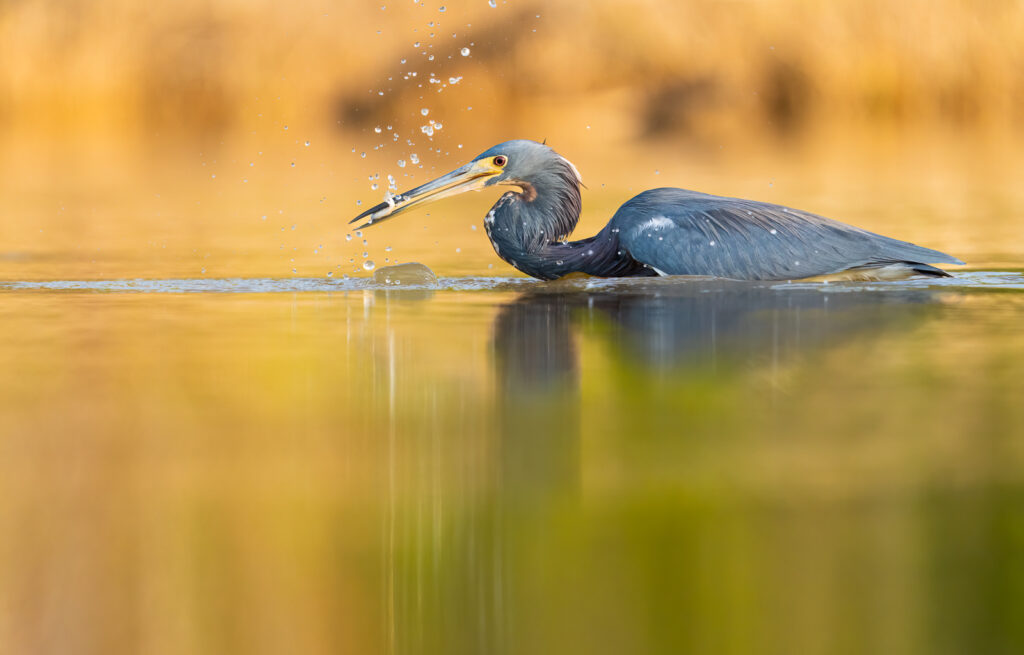
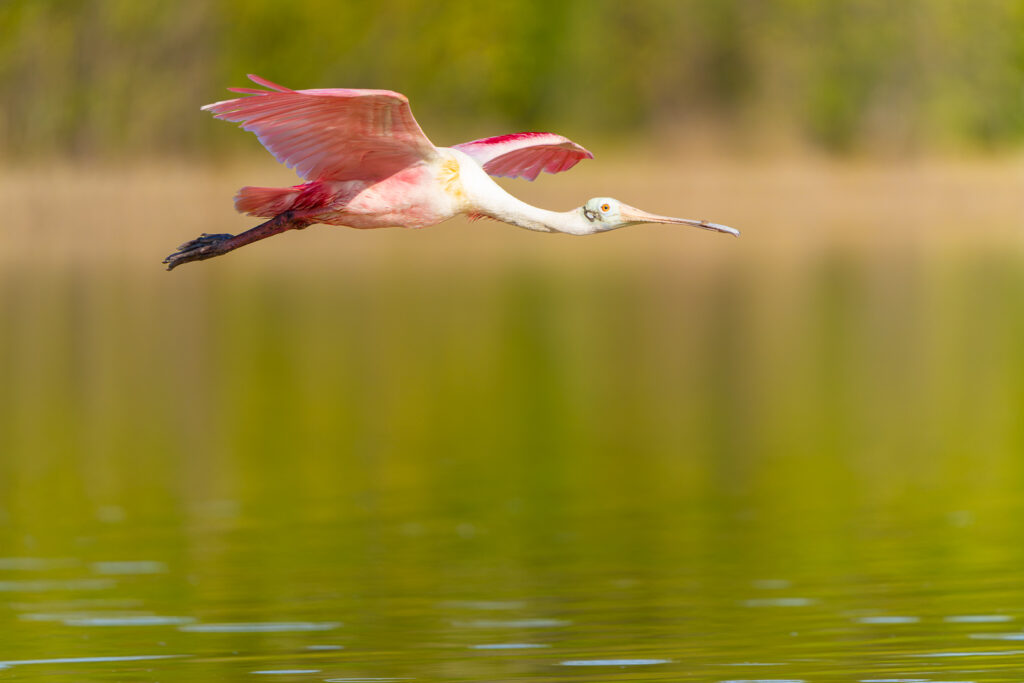
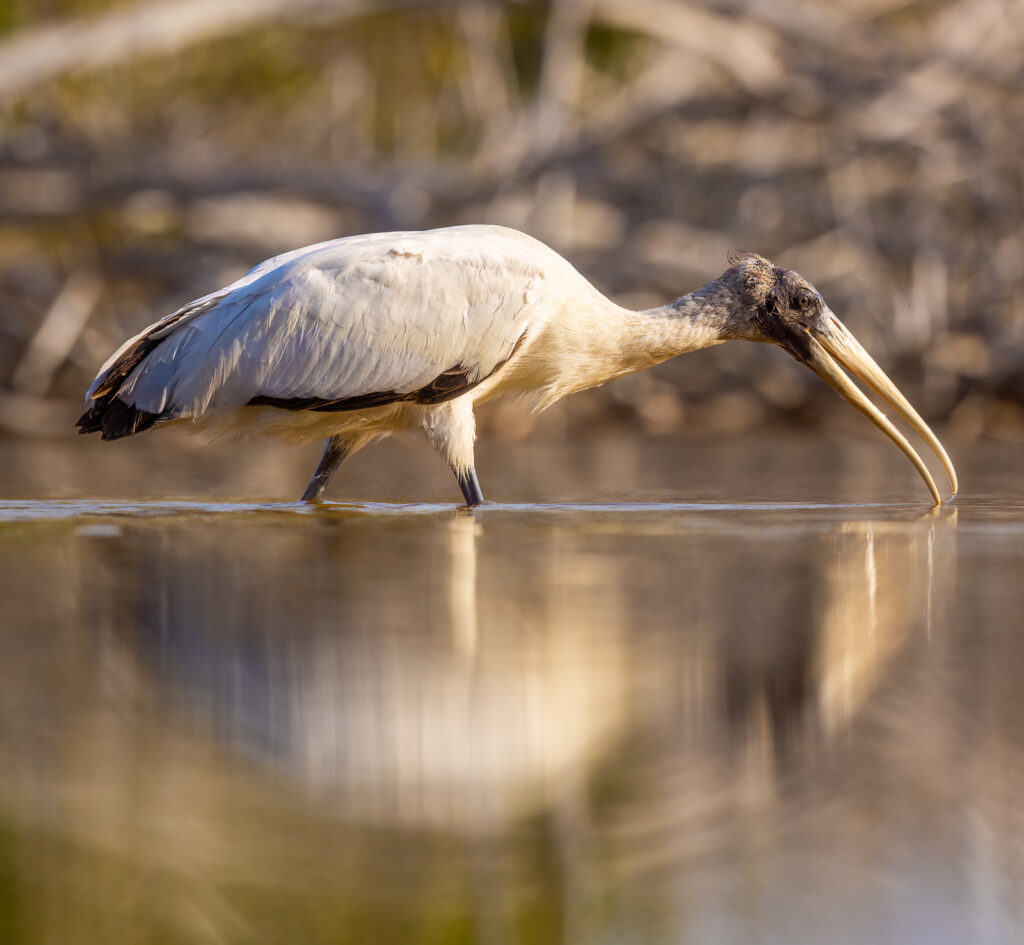
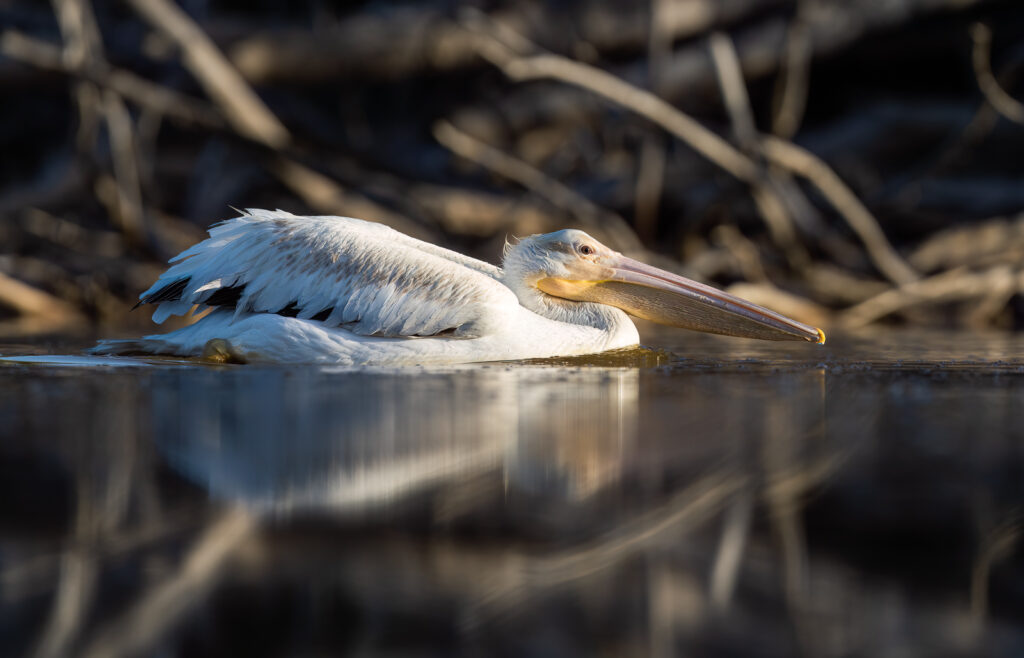
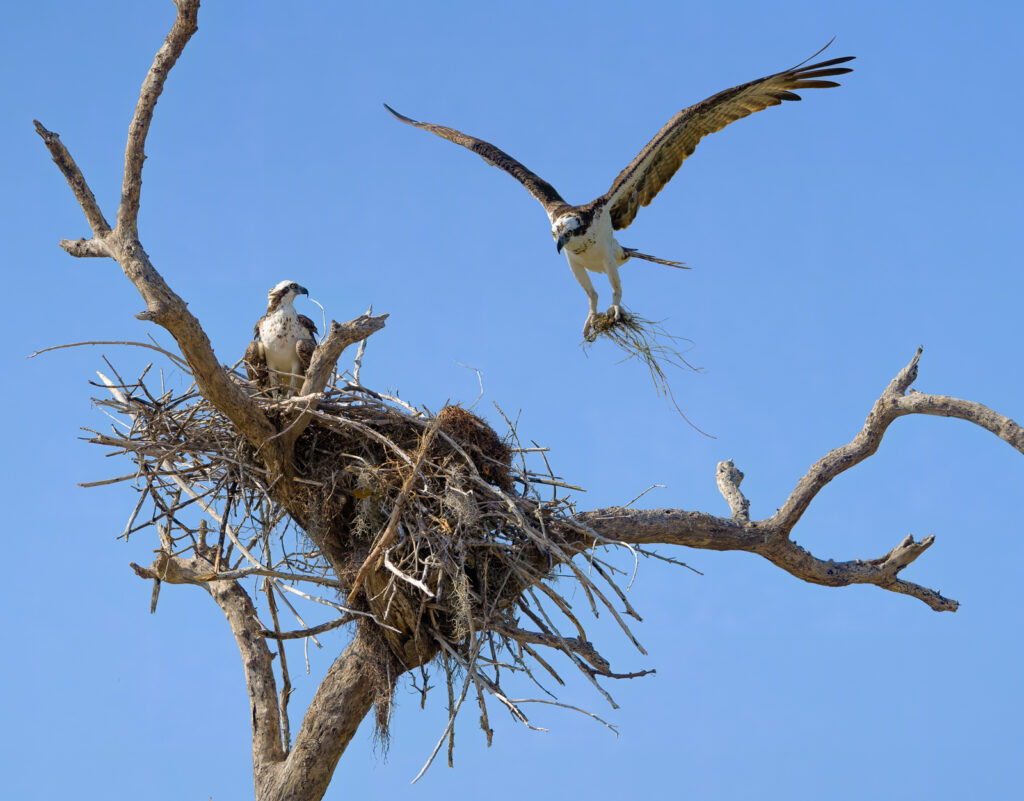
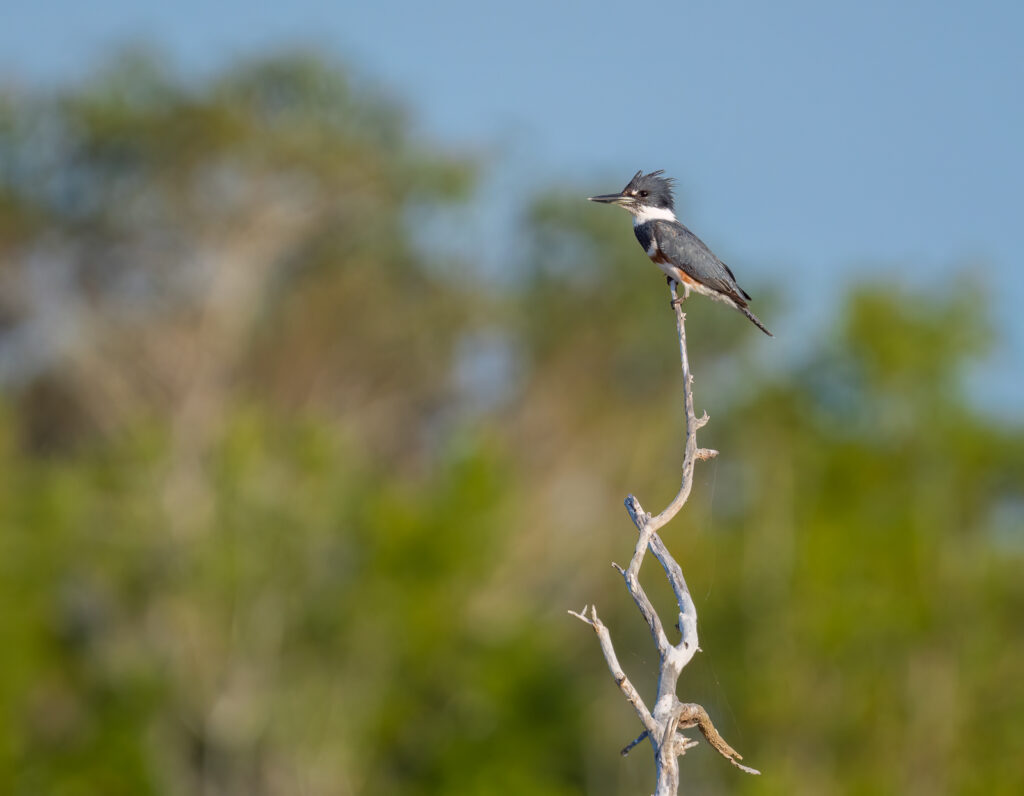
This concludes the best areas for photographing wildlife in the southern portion of Everglades National Park. Before we move on to a couple more locations, I’d like to share a few more helpful tips based on my outings and experiences. First, wading birds seemed to be most active at sunrise and a few hours after. Second, try to learn/memorize bird calls and sounds as it will help you know what species may be around even if you can’t see them. And lastly, water means food, and during the dry season, water is scarce! So as you drive along the main park road, slow down and look for areas with water and you may just find something to photograph.
Shark Valley
For the remaining locations, I’ll be heading west along the Tamiami Trail. The first stop is Shark Valley, which is part of the Everglades National Park (ENP) system and that means you can use your park pass or receipt from ENP if you kept it (valid for a week I think). And in case you’re wondering, you will not see any sharks here, but they aren’t far away in the Shark River and Little Shark River whose brackish waters are a rich habitat for a few species of sharks. What you will see are lots and lots of alligators in the water and along most of the paved 15-mile loop trail! You can walk, bike, or take a tram tour to explore around. Note, the tram tours are only available during business hours. For photographing wildlife, you won’t need to do the entire loop since most of them can be seen within the first mile of the parking lot. Be aware that this is a major tourist destination and it gets crowded! Plan ahead and enter early before the crowds by parking in the grass along the Tamiami trail since the park gates don’t open until 8 am. Along the trail, you’ll get to photograph mostly the same species seen at ENP with the addition of Northern Harriers and red-wing blackbirds. A medium to super telephoto lens will suffice since a majority of the wildlife are not that far away from the trail. The best thing about this location is that the wildlife are very accustomed to people so you won’t need to worry about them flying away if you get too close!
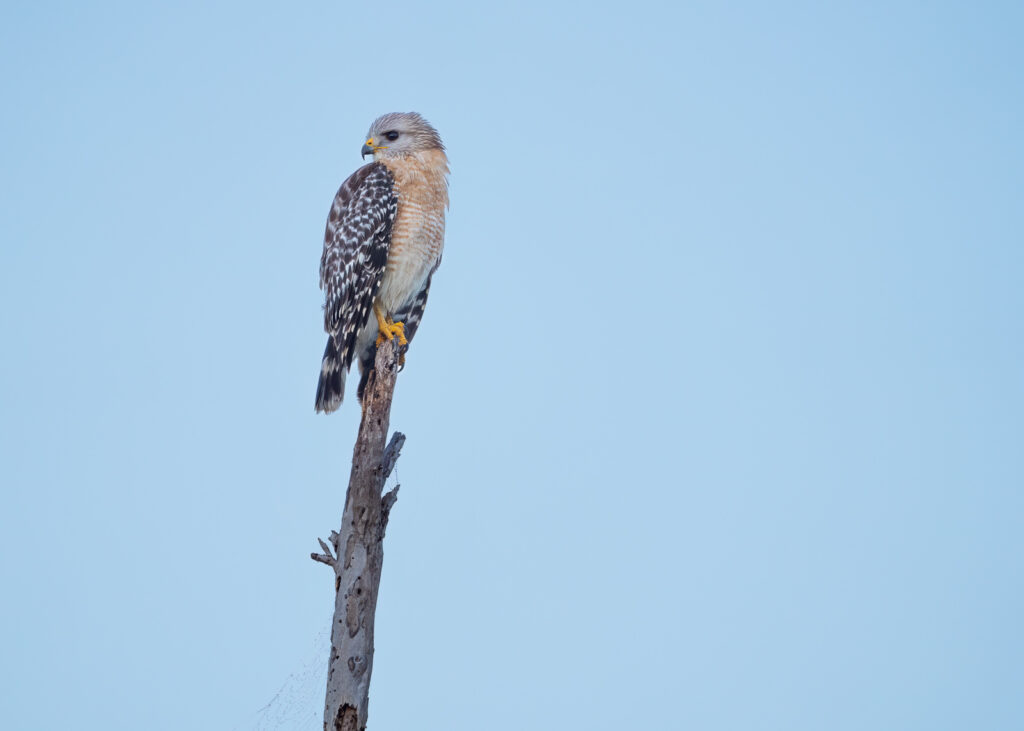
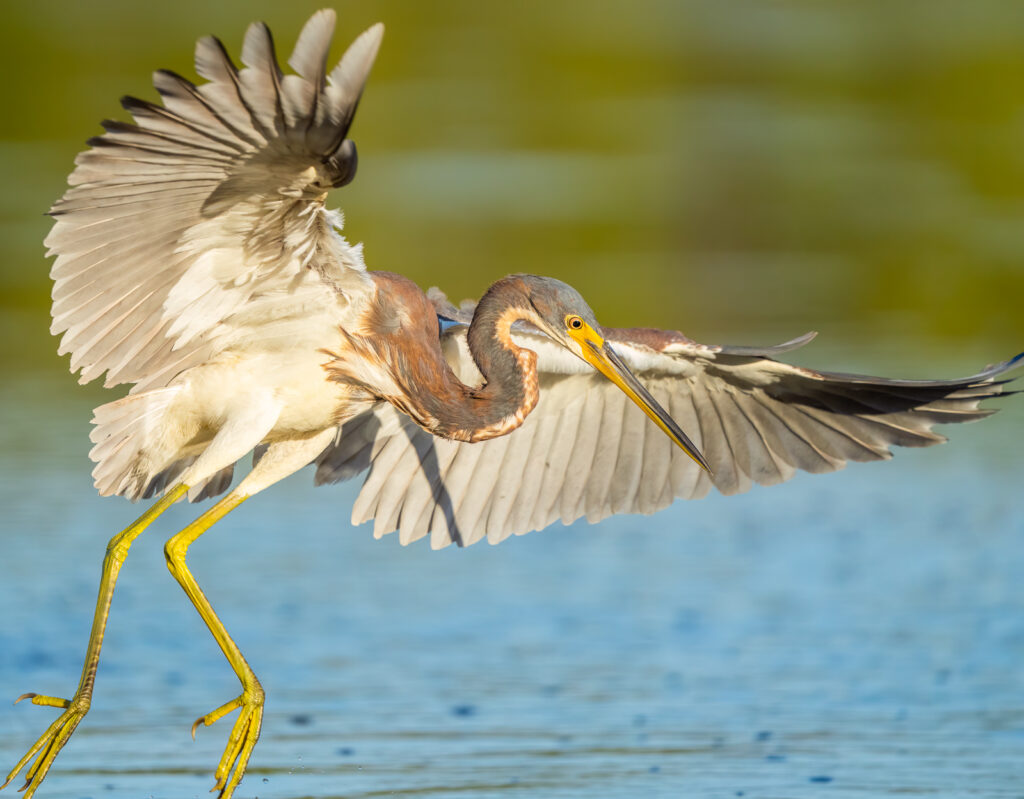
Loop road
The next location is the Loop road scenic drive in Big Cypress National preserve. Loop road is a 24-mile-long dirt road that takes you deep into the Everglades where you will be surrounded by magical swamps and cypress forests filled with wildlife. You’ll see most of the same wildlife species as the last two locations in addition to black-crowned night herons and otters! From my observations, I noticed wildlife activity starts to increase earlier in Big Cypress than in ENP, beginning around mid-December. While you can see wildlife throughout the drive, there are two spots where you can get unobstructed views of them. Both are closer to the west end of the loop so if you’re in a hurry and want to save time I suggest entering from the western entrance. Be aware that the road is not paved and is ridden with potholes, so drive slowly. If you enter from the western entrance, the first stop is the Gator hook trail, which is a foot trail that takes you about 2 miles into a cypress forest. Depending on the amount of rainfall during the wet season, this trail may still have portions where you trek through knee-high water so be prepared for that. I like this location because it offers photographers a chance to get more environmental portraits of great white herons and red-shouldered hawks as they perch atop the cypress trees scoping out their next meal.
After hiking Gator Hook, you can continue driving south along Loop Road to the final stop called Sweetwater Strand. I love the immersive 360-degree view of the swamp this location offers! It will be a bit dark since you’ll be under the canopy of large cypress trees, so bumping up your ISO to at least 2500 is a must, especially if you’re shooting handheld (highly suggested here) or want to capture birds in flight. Sweetwater Strand also offers you the best opportunity to see the otters swimming and catching food, but you’ll have to keep your eyes wide open since they camouflage extremely well in the dark swamp. As far as lens recommendations, 400mm or more is needed, especially ones with fast apertures to keep your ISO down. These days, most modern mirrorless cameras do great in low light, so even shooting above ISO 3200 can yield relatively clean images. And with the latest AI noise removal software available, photos can easily be cleaned up in just a few clicks!
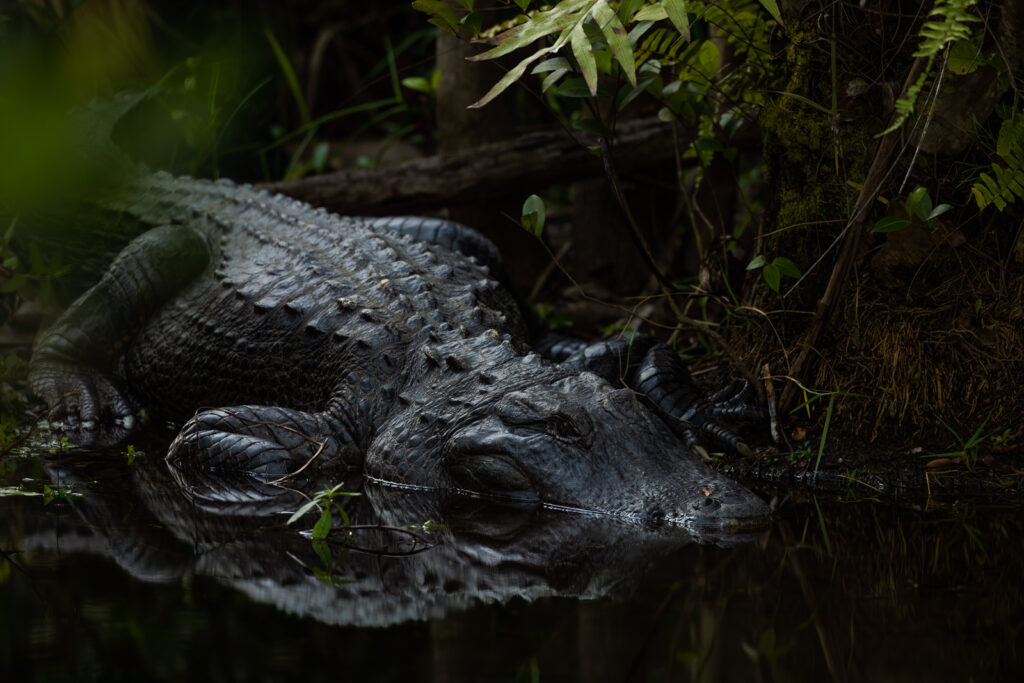
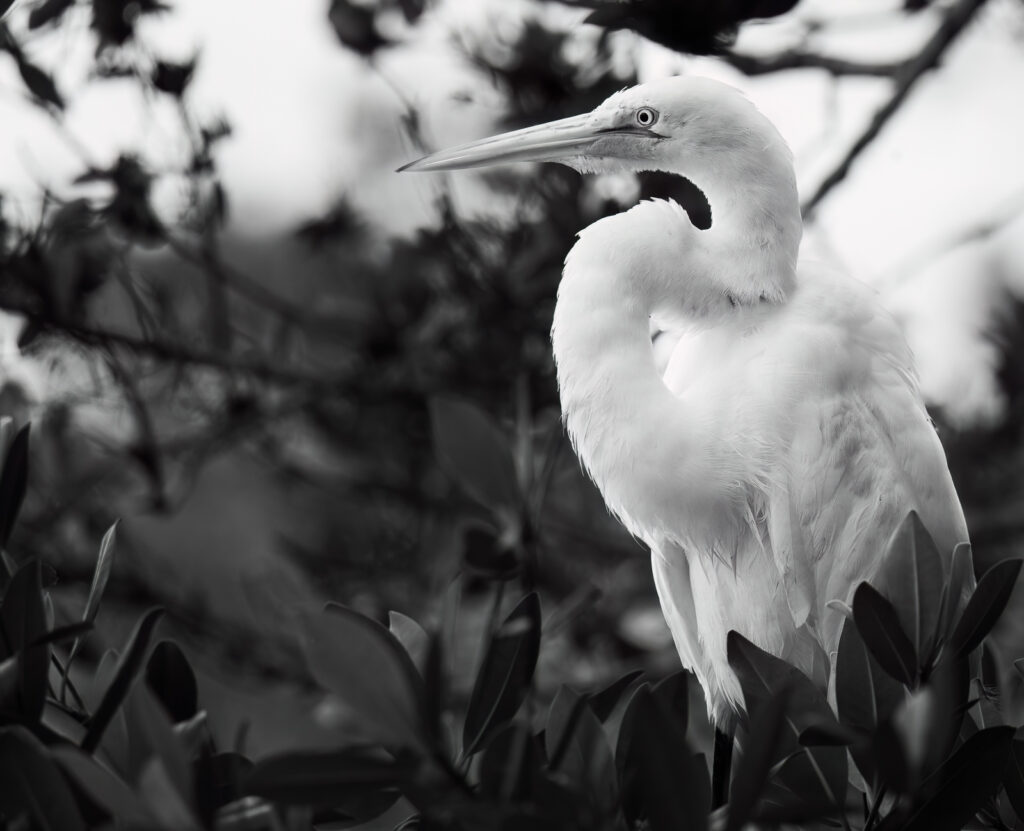
In conclusion, South Florida has many great areas for viewing and photographing wildlife, particularly our diverse number of beautiful bird species! These were just a few of my favorite locations that are my go-to spots where I know I can walk away with a few keepers for my portfolio. Feel free to explore other locations within ENP and Big Cypress National Preserve. Tamiami Trail has tons of roadside stops along the way to Loop Road so keep an eye open for them. Big Cypress is also one of the locations where you are most likely to see the endangered Florida Panther, but you would have to be extremely lucky. During the dry season, the weather is just amazing and the mosquitoes are tolerable. I would still recommend using a light bug spray during your morning outings, and sunscreen during the day. I hope you enjoy your time and remember to bring lots of extra memory cards because they will fill up quickly! And as always, please be respectful towards the wildlife and their habitat.
Be sure to check out my other blog post here on the top 8 places for landscape photography in Florida.
And also another great location for Florida wildlife photography here.
